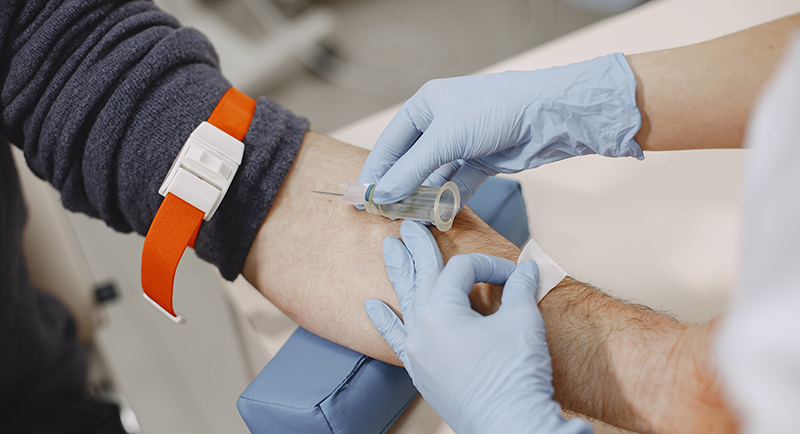How to prevent blood clots from coming back
Blood clots, such as deep vein thrombosis (DVT) or a pulmonary embolism, are scary. To have survived and recovered from this medical emergency is a feat in and of itself. Now, how do you prevent another clot from occurring? Reality says because you have a history of a blood clot, this may increase your risk of developing one in the future.
Causes of a reoccurring blood clot
There are multiple reasons why people develop blood clots. From surgery, pregnancy, obesity, prolonged bed rest, long periods of sitting, and birth control pills to a genetic or inherited tendency for excessive clotting, each can be a possible cause for a life-threatening blood clot to form.
Depending on the circumstances of why you had a blood clot in the first place will determine the likelihood of it happening again. Recurrent blood clots due to surgery or trauma are usually very low. But spontaneous blood clots, without any risk factors, have a 30 percent chance of happening again over the next ten years.
Fortunately, there are lifestyle changes you can make to reduce the risk of another blood clot developing. Generally, your doctor should discuss recommendations on how to prevent them long-term. One recommendation may be to wear compression stockings to help lightly squeeze the legs and help improve the circulation of blood to prevent it from pooling in your lower legs.
Ways to prevent blood clots from occurring again
During and after recovery from a blood clot, it’s important to follow your doctor’s advice and treatment plan. Failure to do this can result in another clot forming that could be even more dangerous than the previous one.
To keep you healthy and clot-free, here are lifestyle tips to follow:
- Keep physically active
Inactivity is one of the biggest risk factors for clot formation. Extended periods of time, sitting or being bedridden, results in reduced blood flow to veins in the legs. Getting up and moving throughout the day creates the demand for blood to increase. Stay active by walking, biking, swimming, or practicing yoga as ways to regain your health after a clot and prevent another one. Always ask your doctor what amount of exercise they recommend taking into account your age, health conditions you may have, and how long it’s been since your blood clot.
- Maintain a healthy weight
A major risk factor for blood clots is excess body weight. Obesity is defined as having a body mass index (BMI) of 30 or higher. Excessive weight gain is associated with a fivefold increased risk of a DVT.
The reason weight gain ups your risk for a blood clot is that extra weight increases the workload of the heart to have to pump blood from the legs back to the heart. Obesity also raises risk factors of insulin resistance and chronic inflammation and affects blood coagulation, each affecting platelet activity and increasing the risk for a blood clot.
- Don’t smoke
Cigarette smoking is one of the biggest risk factors for blood clots. Tobacco smoke causes a buildup of cholesterol, damages the heart and lungs, and increases inflammation in the blood vessels. It also influences the number and quality of blood platelets, cells necessary to prevent bleeding by sticking together to form a clot.
- Reduce the risk of DVT when flying
Flying internationally for many hours on an airplane can set you up for the risk of a DVT clot. To avoid this scenario, wear compression stockings on the plane, get up and walk around every hour, and choose an aisle seat, making it easier to get up and move around. While seated, do foot circles, flexing and pointing of your feet, and stretch out your legs as much as you can to improve circulation.
- Stay well-hydrated
To keep your blood flowing efficiently throughout the veins, it helps to drink plenty of fluids each day, especially water. Staying hydrated promotes movement of blood in the legs and is critical when you’re bedridden or immobile, such as stuck on a long flight. The fluid recommendation for optimal blood flow is to drink eight to ten glasses of water each day.
- Keep a lid on stress
Good heart health likes a low stress lifestyle. Managing stress can also help prevent a blood clot like DVT. When the body is under stress, this increases blood pressure and inflammation in the body. These two factors also contribute to the development of a blood clot. While everyone has stress, it’s how its addressed that matters. Practice stress management by spending time outdoors, deep breathing, and being grateful.
- Take medication as prescribed
If you are taking blood thinner medication, do so according to your doctor’s instructions.
- Keep doctor appointments
Check in with your doctor who managed your blood clot with follow-up appointments. Having your doctor see you regularly helps them assess how you are doing and to possibly find any health condition needing attention. Every other doctor you see should be informed about your history of having had a blood clot. This can make a difference in recommendations if you need hormone or cancer treatments.
Dr. David Samadi is the Director of Men’s Health and Urologic Oncology at St. Francis Hospital in Long Island. He’s a renowned and highly successful board certified Urologic Oncologist Expert and Robotic Surgeon in New York City, regarded as one of the leading prostate surgeons in the U.S., with a vast expertise in prostate cancer treatment and Robotic-Assisted Laparoscopic Prostatectomy. Dr. Samadi is a medical contributor to NewsMax TV and is also the author of The Ultimate MANual, Dr. Samadi’s Guide to Men’s Health and Wellness, available online both on Amazon and Barnes & Noble. Visit Dr. Samadi’s websites at robotic oncology and prostate cancer 911.

